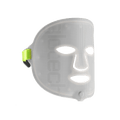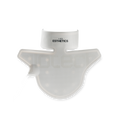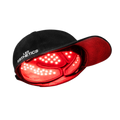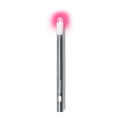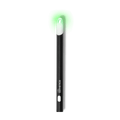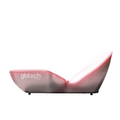LED Light Therapy
LED light therapy is a non-invasive treatment used in dermatology and skincare to reduce acne, signs of aging, skin discoloration, and psoriasis. Originally developed for medical and space applications, this innovative therapy has become a staple in clinics and at-home routines due to its versatility and low-risk profile for treating a range of skin conditions. If you're considering LED light therapy, understanding its mechanism, benefits, and application is key to getting the best results.What is LED light therapy?
LED light therapy (Light Emitting Diode therapy) works by emitting low-level wavelengths of light into the skin to stimulate specific biological processes. Unlike UV light, which can damage the skin, LED light is non-thermal and does not burn or harm tissue, as supported by research. Instead, it energizes cells, promoting repair and regeneration.
Each light color targets a specific skin concern. Red light is commonly used to stimulate collagen and improve signs of aging. Blue light combats acne-causing bacteria. Green and yellow lights address hyperpigmentation and inflammation, while near-infrared penetrates deeper layers to support healing and tissue repair. These wavelengths are absorbed by the mitochondria in skin cells, boosting their energy (ATP) production and enabling faster regeneration.
Initially developed by NASA to support wound healing in space, LED therapy is now backed by dermatological research and clinical application. Whether as a standalone treatment or part of a broader skincare regimen, it’s become a go-to solution for visible, non-invasive results.
What does each LED light therapy color actually do?
One of the most powerful features of LED therapy is its adaptability. LED light addresses a range of skin conditions by using wavelengths that penetrate the skin at different depths.
- Red Light (630–660nm): Reaches into the mid-layers of the skin, where it stimulates collagen production and boosts circulation.
- Blue Light (around 415nm): Targets the skin’s surface and is effective at eliminating acne-causing bacteria (Propionibacterium acnes).
- Green Light (around 525nm): Penetrates just below the surface to calm irritation and address hyperpigmentation.
- Yellow Light (around 590nm): Penetrates slightly deeper than green and helps improve lymphatic flow and blood circulation.
- Near-Infrared (810–850nm): This wavelength penetrates more deeply than others, reaching the muscular and connective tissue layers.
Many professional in-clinic and at-home LED devices feature multiple wavelengths that can be used in sequence to treat different concerns, delivering more comprehensive skin benefits.
What skin conditions can LED light therapy treat?
LED light therapy is supported by emerging clinical evidence for its efficacy across a range of dermatological and cosmetic applications. It is often recommended to be used in combination with other treatments and products to enhance their effectiveness by increasing cellular energy and circulation.
Common conditions LED therapy is used to treat include:
- Wrinkles and fine lines
- Acne and breakouts (especially inflammatory acne)
- Rosacea and chronic redness
- Hyperpigmentation and sun damage
- Scarring from acne, surgery, or injury
- Eczema and psoriasis (to help soothe inflammation)
- Hair thinning and hair loss (particularly red and near-infrared light)
Initial improvements in skin tone and clarity are often observed within 3 weeks, with more noticeable changes typically visible between 6–12 weeks of consistent use.
How effective is LED light therapy?
A growing body of scientific research supports the use of LED light therapy in both medical and cosmetic dermatology. Clinical trials have shown that red and blue LED wavelengths can reduce acne lesions, stimulate collagen, and improve overall skin health with minimal risk of adverse effects.
For example, a 12-week study published in Dermatologic Surgery showed statistically significant improvements in wrinkle reduction and skin roughness among subjects treated with red LED light. Similarly, research in Photomedicine and Laser Surgery demonstrated that blue light therapy can significantly reduce inflammatory acne when used regularly.
While results vary depending on the device used, the treatment area, and the user's skin type, the consensus is clear: when applied consistently and correctly, LED light therapy provides measurable benefits for a wide range of skin concerns.
Who should not use LED light therapy?
While LED light therapy is widely considered safe, being non-invasive and UV-free, it’s not suitable for everyone. Most users experience little to no side effects, though mild redness or dryness may occur, especially in those with sensitive skin.
You should consult a healthcare professional before using LED light therapy if you:
- Are pregnant or trying to become pregnant
- Are undergoing chemotherapy
- Have epilepsy or a history of seizures
- Have a photoallergy or are especially light-sensitive
- Are taking medications that can increase light sensitivity (e.g., tetracycline, steroid or cortisone injections)
LED light therapy is intended for adult use only and should not be used by children or adolescents, as their skin and neurological systems may be more sensitive to light exposure.
How do I safely use at-home LED light therapy?
At-home LED light therapy devices can deliver real, visible results, but safety and consistency are key. While they are typically less powerful than professional-grade devices, many are FDA-cleared and designed to safely improve a range of skin concerns.
Common at-home formats include LED face masks, handheld wands, and neck or décolletage panels. These are typically used 3–5 times per week for 10–20 minutes per session, depending on the device and your specific skin goals.
Experts in LED light therapy suggest the following best practices:
- Stick to the recommended schedule: Overuse won’t speed up results and can actually cause irritation or reduce effectiveness.
- Avoid combining with active skincare during use: Skip acids, or photosensitizing products immediately before or after a session to avoid sensitivity.
- Protect your eyes: Use goggles or keep your eyes closed, especially with high-intensity LED lights.
- Be patient and consistent: Visible changes usually take several weeks. Stick with your routine and track your progress.
Keep in mind that more powerful doesn’t always mean better. Following a routine that aligns with the manufacturer’s guidelines is crucial to seeing real results.
How should I prep my skin for LED light therapy?
To get the most out of your LED light therapy, start with a clean, dry face or neck, and consider using a serum specifically formulated with light-activated ingredients. These serums are designed to work in harmony with LED wavelengths, enhancing the skin’s response and boosting overall results. Ingredients like copper peptides, light-activated complexes, or nicotinamide can support collagen production, repair, and radiance when activated by light.
After your session, follow up with your regular skincare routine. Applying moisturizers or hydrating face masks post-therapy helps lock in hydration and reinforces the benefits of the light-activated ingredients, without interfering with light absorption during the session.
To track your progress, consider taking before-and-after photos every few weeks under the same lighting. Most users begin to notice subtle changes in tone, texture, and overall glow after several sessions, with continued improvements as the skin responds to ongoing light stimulation and complementary skincare.
What are the medical applications of LED light therapy?
LED light therapy has been studied and applied in medical contexts beyond cosmetic dermatology:
- Accelerating wound healing and post-surgical recovery
- Reducing inflammation and pain in conditions like arthritis and tendonitis
- Supporting oral health and healing from mouth ulcers or dental procedures
- Hair restoration therapy for androgenic alopecia
- Reducing treatment side effects such as mucositis in cancer patients
These areas show promising results, although more large-scale, peer-reviewed trials are needed to solidify therapeutic protocols. It's also important to differentiate between cosmetic and medical-grade devices, which often operate at different wavelengths and intensities.
What should I know before starting LED light therapy?
Before integrating LED light therapy into your skincare or wellness routine, keep the following in mind:
- Speak with a dermatologist if you have chronic skin conditions, are on medication, or have concerns about sensitivity.
- Ensure your chosen device uses clinically supported wavelengths.
- Avoid direct sunlight or photosensitizing treatments before and after sessions.
- Follow all instructions closely and use eye protection when needed.
- Track your results to see progress.
LED light therapy is most effective as part of a holistic skincare or recovery regimen. Whether you’re targeting acne, fine lines, or inflammation, consistency and the right supporting products will make all the difference.
A final word from LED Esthetics
LED light therapy continues to grow in popularity for good reason—it's safe, science-backed, and accessible. Whether you’re using it to combat breakouts, reduce wrinkles, or support healing, LED therapy is a gentle yet powerful addition to your skin health toolkit.
LED Esthetics’ FDA-cleared Glotech™ Mask Pro and Glotech™ Collar were developed with precision wavelength engineering to deliver optimal results in the comfort of your home. For those looking to elevate their skincare regimen without harsh chemicals or invasive procedures, LED light therapy offers a radiant path forward. As always, we recommend consulting with a healthcare provider to find the ideal routine for your skin needs and goals.
We're here to help you make the most of your light therapy journey.


